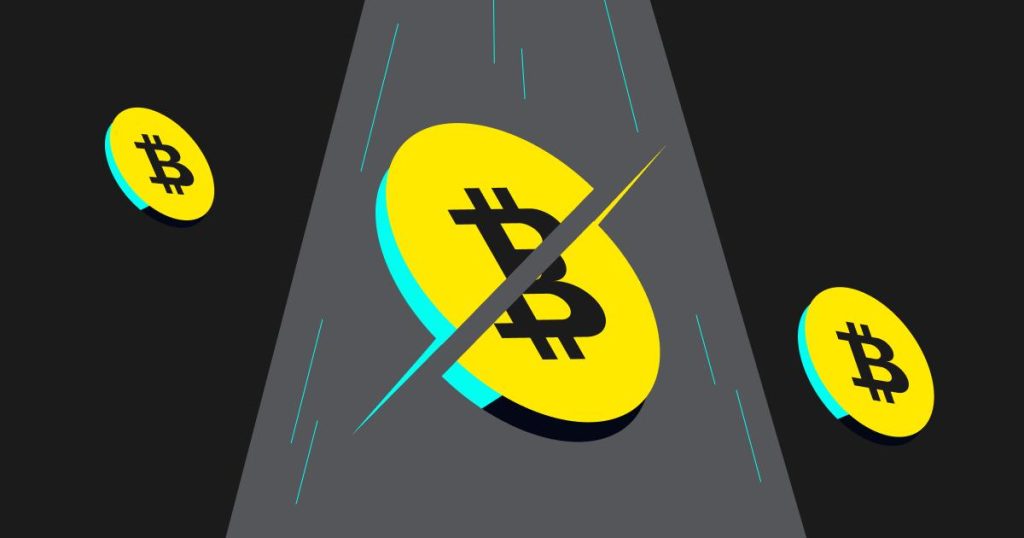Unlike fiat currencies with ever-expanding supplies controlled by central banks, Bitcoin boasts a fixed and finite supply of 21 million coins. With over 19 million already mined, the remaining Bitcoins will be gradually released through a process known as halving.
Why is Halving Important?
“Bitcoin’s limited supply and issuance mechanism are crucial features,” says Bruce Fenton, CEO of Chainstone Labs. This controlled issuance, achieved through halving, positions Bitcoin as a store of value similar to gold, contrasting with inflationary fiat currencies.
What is Bitcoin Halving?
Simply put, halving is the act of cutting the Bitcoin mining reward in half, occurring roughly every four years. This mechanism, embedded in Bitcoin’s algorithm, combats inflation by maintaining scarcity. Theoretically, with demand remaining constant, a reduced supply of new Bitcoins should lead to price appreciation.
“Bitcoin‘s production scarcity defines its finiteness,” explains David Weisberger, CEO of CoinRoutes. “Reduced rewards constrain supply, and when demand remains high, it can positively impact the price, making Bitcoin attractive to investors.”
Understanding the Mechanics of Halving
Bitcoin transactions are validated by a decentralized network of miners who compete to solve complex mathematical problems. The winner earns a reward of 6.25 BTC for adding a new block of transactions to the blockchain (proof-of-work mechanism). With the current Bitcoin price, this reward translates to roughly $193,750, a significant incentive for miners to maintain network stability.
New blocks are added approximately every 10 minutes, and Bitcoin’s code dictates a reward reduction by half after every 210,000 blocks are mined, translating to roughly every four years. These halving events are often accompanied by periods of increased Bitcoin price volatility.
When is the Next Bitcoin Halving?
While the exact date hinges on block creation, experts anticipate the next halving to occur around May 2024, aligning with the historical four-year cycle. This predictability helps mitigate potential shocks to the network.
Volatility and Price Movements Around Halving
“Historically, significant price volatility surrounds Bitcoin halving events,” says Rob Chang, CEO of Gryphon Digital Mining. “However, the price typically rebounds significantly a few months after.” While other factors influence Bitcoin’s price, halving events generally seem to have a bullish effect after the initial volatility subsides.
Investor Considerations
Richard Baker, CEO of TAAL Distributed Information Technologies, advises investors to exercise caution. While scarcity can drive price increases, reduced mining activity could lead to price stagnation. “The focus for investors should be on the network’s overall growth,” says Weisberger. “A growing network strengthens Bitcoin’s potential as a global store of value.”
A Look Back: Past Halving Events
The first Bitcoin halving occurred in November 2012, followed by subsequent halvings in July 2016 and May 2020. The initial mining reward in 2009 was 50 BTC per block, dropping by half with each halving event. The final halving is estimated to occur in 2140, exhausting the total supply of 21 million Bitcoins. At that point, miners will solely rely on transaction fees as compensation.
Potential Impact on Miners
Baker suggests that miners might shift processing power away from Bitcoin after the next halving to chase higher transaction fees elsewhere, potentially jeopardizing network security due to a decrease in miners.
The Counterpoint: Supply and Demand Dynamics
Patricia Trompeter, CEO of Sphere 3D Corp., highlights that while halving reduces miner rewards, it also shrinks the supply of new coins without affecting demand. “If economic theory holds true, as it has historically for Bitcoin, prices should rise dramatically due to the supply shock,” she says. “However, the direct link between historical price movements and halving events remains a subject of debate.” Increased prices would incentivize miners to continue processing Bitcoin transactions.
Conclusion
Bitcoin halving is a critical mechanism that controls inflation and reinforces Bitcoin’s unique value proposition as a scarce digital asset. While the short-term impact on price can be volatile, the long-term implications for Bitcoin’s viability as a store of value remain promising.


